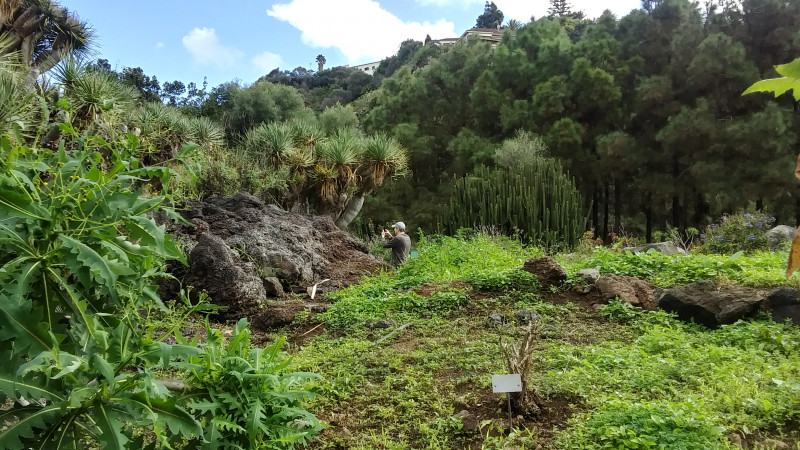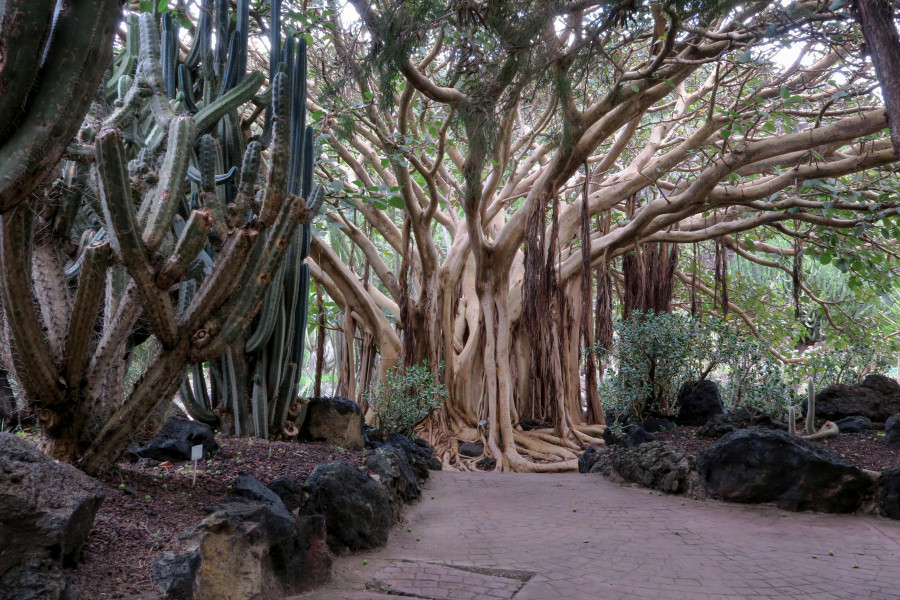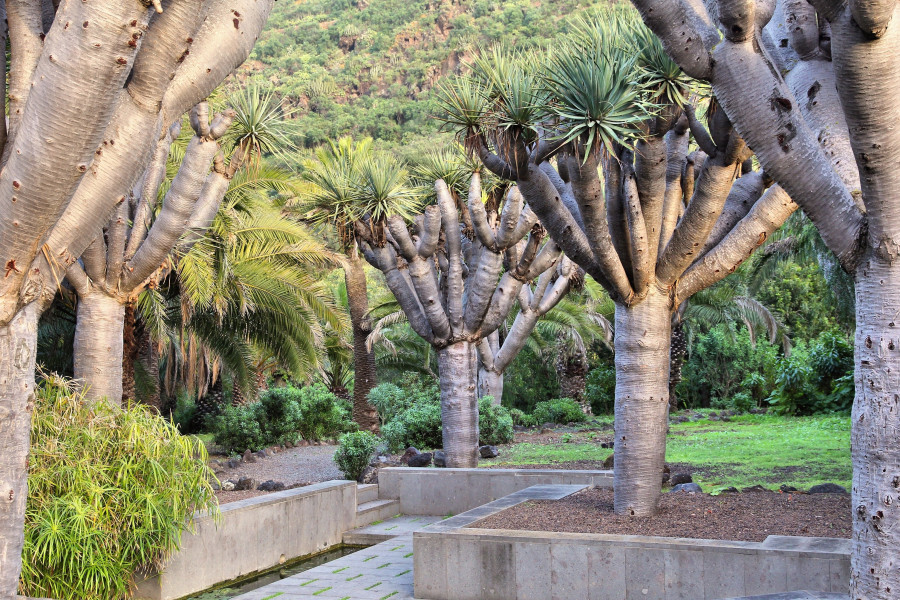 31-12-2021
31-12-2021
Canary Garden
Known as the Canary Island Garden, it was the creation of the Swede Eric Ragnor Svensson. The main idea was to bring together in a single natural space all the botany of the islands.
This curious Swedish botanist travelled around the islands in search of material to contribute to the Jardín Canario. Together with Cabildo of Gran Canaria, all the contributions were carefully considered, from the flow of water to the landscape and structural problems of the site.
Svensson oriented the first stage of the Garden towards scientific work to explore remote parts of the islands in order to collect new scientific groups or improve knowledge of others.
He first developed a herbarium by recreating living collections and then inaugurated a modern programme of scientific study with postgraduate assistants.
Around the 1960s, the president of the founding Cabildo, Mr. Matías Vega, accepted Eric Svensson's request that the garden be opened to the public without an inauguration.
It was later named ''Viera y Clavijo'', after the 18th century Canarian naturalist.

In 1973, in front of the garden itself, the creator lost his life due to a traffic accident and is remembered every year at his grave. This tomb is located in the laurel forest area and is honoured by the workers themselves in gratitude to him.
In addition, at one of the entrances, the access leads directly to one of the squares of this natural space where there is a commemorative statue to José Viera y Clavijo.
In 1974, David Bramwell, a specialist in the flora and biogeography of the islands, took over the post of director. He remained in this post until 2012, when he retired in November.
This new director promoted the research phase by expanding and implementing new infrastructures and laboratories to enable the work of the new biologists. Thanks to the work of these teams, they were awarded numerous prizes, such as the César Manrique Environment Prize. Other studies and research were also recognised, such as endangered populations of the islands, a project on the Macaronesian flora, among others.
Bernardo Navarro is the subsequent successor of Bramwell in 2012, being a graduate in biological sciences and an expert in Canarian flora.
During the following years he played a fundamental role for the centre, leading and promoting a system of internal discussion about the future of the centre, as his functions in the centre were added to new political functions.
The last successor, in 2014, to the position of director was Dr. Juli Caujapé Castells, who has focused his scientific activity on applying the information of the DNA molecule to a multidisciplinary and creative field. Thanks to them, support has been obtained to obtain important external resources and with it the creation of a molecular laboratory or a DNA bank.

WHAT WILL WE FIND IN THE CANARIAN GARDEN?
Park of the Thousand Palm Trees.
Located in the square ''Matías Vega'' in honour of the President of the Cabildo de Gran Canaria for the support and effort shown. At first sight in this square, we can observe the palm tree
Canary Palm ( Phoenix Canariensis). This specimen reaches a height of 25 metres, although the best known are between 10 and 15 metres high.
Another well-known specimen located in the coastal areas is the Phoenix Dactilera.
Native species of the islands.
Gran Canaria Dracaena Draco
Tenerife Echium Virescens
Lanzarote Helichrysum gossypinum
La Gomera Sideritis Nutans
El Hierro Echium Hierrense
La Palma Senecio palmensis
Fuerteventura Asteriscus sericeus
VISITOR INFORMATION
Accesibility
Tafira: Centre Road Km 7 (GC-110).
Barranco Guiniguada: Road el Dragonal Km 7 (GC-310). People with reduced mobility should access via this road.
Caution
Caution should be exercised on the paths in the Garden. This natural space belongs to a ravine and its paths are structurally dangerous because of this. No political or religious events or celebrations are allowed.
Visits
For schools, guided tours must be requested at least one week in advance, with a limited timetable. The application must contain information such as: school details, group size, etc....
For guided tours at weekends, free of charge, the booking form must also be completed.



